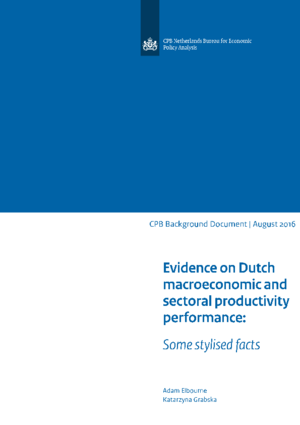Evidence on Dutch macroeconomic and sectoral productivity performance: Some stylised facts
At the macro level, the Netherlands caught up to US productivity levels in 1970s and until 2008 productivity was roughly equal. Thereafter we see a sizeable downward shift of the productivity trend, not just in comparison to the US, but overall since US productivity growth has also slowed. Even so, the Netherlands is still a highly productive country with labour productivity 33% higher than the OECD average in 2014. To get a deeper understanding of recent productivity developments we also look at sectoral data.
We perform our sector level analysis based on annual OECD data for the time period from 1995 to 2014 using a decomposition into 20 sectors. In summary, all Dutch sectors are among the top five most productive in the OECD dataset we are using. However, being in the top five hides a lot of detail: often the most productive country for a given sector is more than 50% more productive than the fifth most productive. For example, if all Dutch sectors were as productive as the most productive of that sector in the OECD (excluding the US and Japan) then total value added in the Netherlands would be about 12% higher.
We also perform a shift-share analysis which decomposes aggregate productivity growth into productivity growth within sectors and the effects of the reallocation of resources between sectors. This analysis shows that the vast majority of productivity growth takes place within sectors, rather than due to reallocation.
Downloads
Authors

